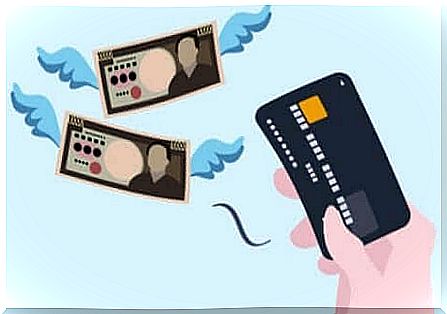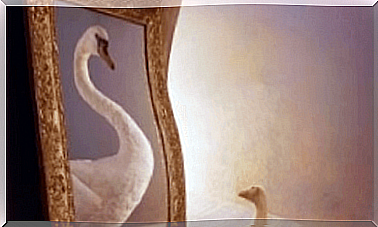Compulsive Shopping Syndrome

Compulsive shopping syndrome has to do with the inability to save to meet future expenses. It is like a flame that burns money: earn it and immediately think about how to spend it, almost driven by the need to get rid of it and stay dry.
It is called buying syndrome or compulsive shopping syndrome and seen from the outside it looks like a life lived on the edge. It is characterized by the inability to save due to the purchase of superfluous or useless items.
Saving is a decisive element of well-being, especially when you cannot count on consistent income. In other words, when money is scarce, knowing how to manage it makes a difference in terms of quality of life. It would seem a contradiction, but economizing is a form of control over our life, especially in anticipation of the future. The compulsive buying syndrome points in another direction.
Money and the compulsive buying syndrome
A healthy relationship with money is the balance between what you earn, invest and spend. This also means having clear ideas about spending priorities and an overview of your financial conditions in the medium and long term.
When these variables are combined in a reasoned way, we can say that we have a good relationship with money. On the other hand, in the compulsive shopping syndrome, the perspective is confused. Who suffers from it:
- He gives himself frequent gifts: he buys to reward himself or to give to others for no specific reason.
- He has the perception of debts, but he prefers not to think about it so as not to fall into anguish.
- He thinks it would be better not to waste money, but he does nothing to change.
- Faced with a sudden income, immediately think about how to spend it.
- He has the feeling that the money will never be enough to cover all his needs and that debts will continue to pile up.
- Feel restless before buying, guilt after, but try not to think about it.
When more than two of these traits are present, it can be referred to as compulsive shopping syndrome. It is a neurotic relationship with money which, like a veil, perhaps hides a deeper problem.

The prospect of the future
Spend today or save for tomorrow: this has always been the dilemma. The awareness of savings, however, exists when there is a vision of the future. Saving means setting aside resources to be allocated to future projects or to deal with unforeseen events. At the same time, it implies enduring frustration (not spending) for a future good (the possibility of carrying out a more important project or minimizing the risks).
For those who suffer from compulsive shopping, the future is a confusing element over which they believe they no longer have control. Or over which you prefer not to have control. Thinking about tomorrow means planning a life plan: not everyone wants or is able to do it.

The compulsive shopping syndrome as an escape
Putting money aside also means being stable : putting down roots, anchoring oneself to a point of reference in order to grow and evolve. It implies the will to build, a will that does not belong to everyone. Whether we like it or not, our attitude towards money affects the resources we can rely on in the future. A future we sometimes prefer to close our eyes on, but still present.
The compulsive buying syndrome or prospective finance management is, therefore, an escape route. It is the desire to escape from a present in which the absence of happiness is compensated by those small and fleeting pleasures offered by shopping.
Or you simply have no idea where your life is going and spending helps to mask this worry. Whatever the reason, it is serious consequences and demands the bill in the form of anxiety, debt and poor control over life.









